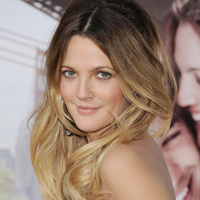
Brillare Hairdressing Academy color expert gives us the scoop on Ombre and Root Shading for fall hair.
When the seasons change, your hair color should follow suit – but transitioning your locks from summer to fall can prove to be tricky at times (and tough on your pocketbook, too)! This year, the switch from beachy to bold just got a little easier thanks to two looks that are sweeping the runways: Ombre and Root Shading.
What are they and how can you achieve the looks? We asked Brillare Hairdressing Academy color expert, Vera Perkins, to shed some light on the matter. A Phoenix-based independent cosmetology school, Brillare Hairdressing Academy is the only beauty academy in Arizona to be recognized as a Sassoon Academy | School Connection (SA | SC), Wella Signature School and Nuts and Bolts Member School.
Here are her answers to our most pressing questions!
What is the difference between Root Shading and Ombre hair color and how is each look achieved?
Ombre and Root Shading are relatively similar, but there are a few slight differences. Root shading is the technique of adding a darker tone to the root area of the hair. This helps balance tone as your natural shade grows in.
Ombre is a technique in which your stylist will strategically place highlights underneath and throughout the ends of the hair to frame your face. A great example of this look would be Rachel Bilson or Victoria’s Secret model, Lily Aldridge.
Both Root Shading and Ombre are great for low maintenance girls who like to have a little fun with their hair!
Which hair color tones work best for these looks?
Root Shading works especially well for blondes who love their light shade, but also need something to balance their skin tone to make it look a bit more natural. For the same reason, the technique looks great on red heads.
While Ombre coloring is best on medium to dark hair tones, coppery and beige to light brown tones also tend to come out great as well. The key is that these techniques add dimension to your hair and lighten you up around your face – making you look fresher and younger!
What is the best way to make either of these shading techniques look most natural?
Both of these techniques are very easy to keep looking natural, with the right mix of colors! A great rule of thumb in any color technique, when the goal is to stay natural, is to stay within three levels lighter and/or darker than your natural hair color. This rule takes the guesswork out of how to make skin tone and eye color really POP!
For a girl on a budget, are these coloring techniques the way to go? Do they have much upkeep?
Both Root Shading and Ombre are awesome for those on a budget because they blend easily with our natural regrowth as it comes in, making it much easier to keep up with. You can say “goodbye” to high maintenance “racing stripe” looking regrowth with both of these!
Does either Root Shading or Ombre damage hair and is there anything we should consider before getting to the chair?
Since Root Shading adds darker tones to the roots of your hair and doesn’t touch the end of your hair, it is less damaging overall. While the Ombre technique lightens hair (which entails slightly more processing), it is so low maintenance that highlights on the ends of your hair only need to be redone about every 4 to 5 months.
Overall, when choosing between the two just ask your stylist. They will be able to give you the best advice when it comes to working these in with your skin tone. Remember, it’s all about how dramatic YOU want to be!
For more about the Billare Hairdressing Academy, visit brillareacademy.com.
More about Ombre hair shading on bellasugar.com.
Photo by Jeffrey Mayer/Getty Images.









Got a comment? Share your thoughts!